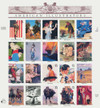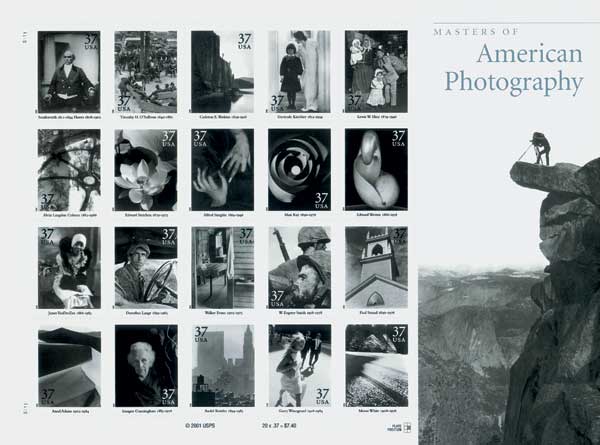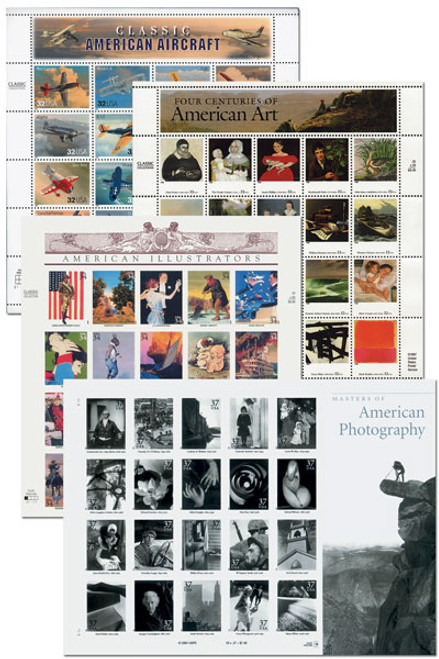
# 3502 - 2001 34c American Illustrators
34¢ American Illustrators
City: New York, NY
Perforations: Serpentine die cut 11.25
Color: Multicolored
Final Issue Of The Classic Collection
The series began six years earlier with the infamous Legends of the West sheet in 1994. That sheet and the series that followed it actually developed out of plans to honor the centennial of Ellis Island!
After the Citizens Stamp Advisory Committee requested artwork for the potential Ellis Island stamp, they found the art was “grim and lacked color.” As they continued to discuss the project, their focus shifted from immigration to America’s Westward migration in the 19thcentury. And that, in turn, became a Western Americana project. They initially considered a four-stamp set but had ideas to honor several figures and ultimately decided on 20 stamps. Then the USPS manager of philately and the head of stamp design came up with the idea for the Classic Collection series, of which the Legends of the West would be the first issue.
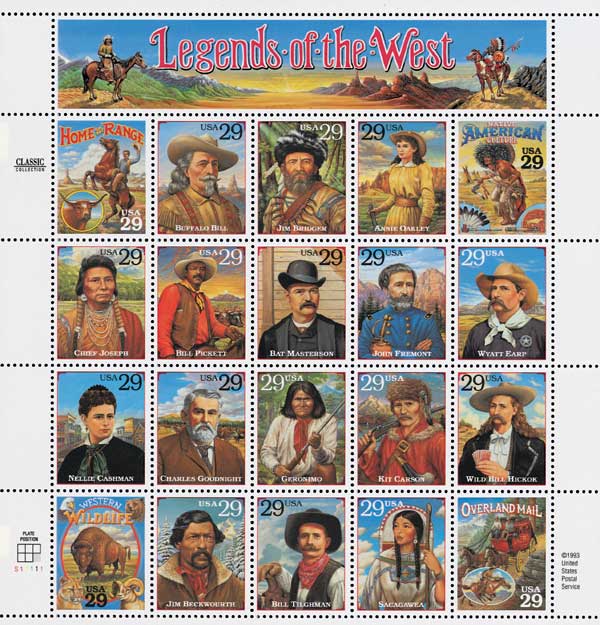
Each sheet in the series would have the same unique 20-stamp format. Each would have broadly-defined Americana themes, exceptional artwork, a banner printed on the selvage of the sheet, and descriptive text on the back of each stamp. Additionally, postal cards with matching artwork would be issued to coordinate with a few of the sheets.
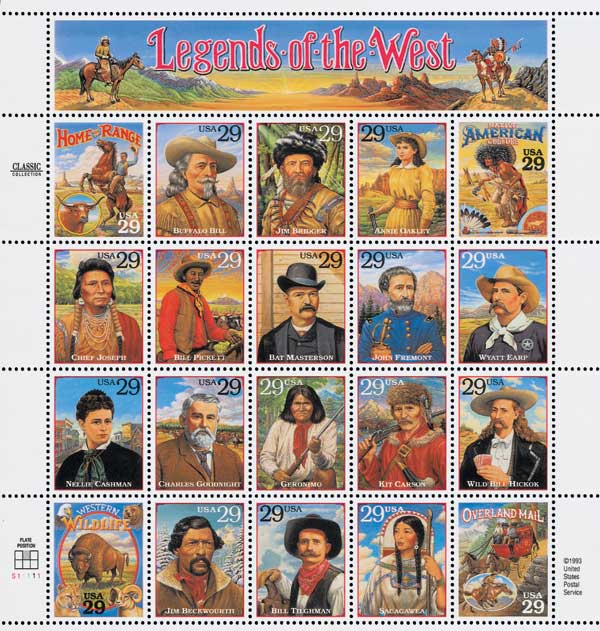
The series got off to a memorable start when it was discovered before the Legends of the West stamps were even issued that the stamp picturing Bill Pickett actually pictured his brother Ben. The sheets were recalled, but 186 were sold before the First Day of Issue, so the USPS sold 150,000 sheets through a mail-order lottery. The corrected sheet was issued on October 18, 1994.
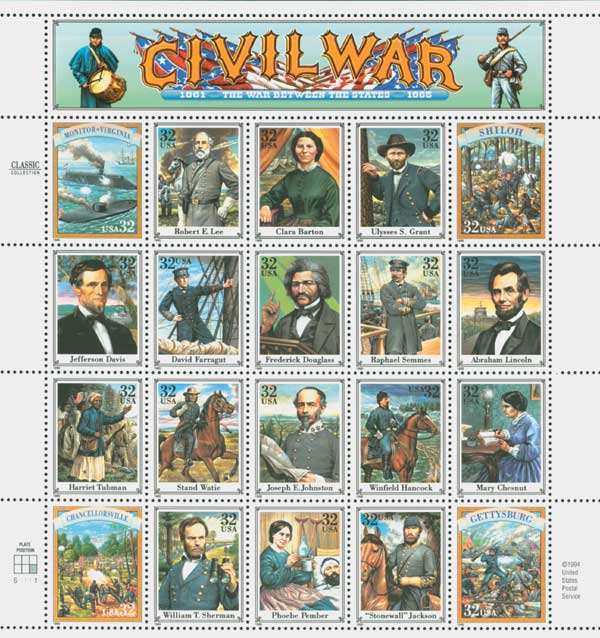
The Classic Collection series continued in 1995 with two more sheets. The first was the Civil War sheet, which marked the 130thanniversary of the end of the war. The creation of this sheet brought about the most extensive effort in USPS history to review and verify the historical accuracy of each of its stamp subjects. Each of the 16 individuals and four battles featured were chosen from a master list of 50 subjects. The goal of the USPS was to show the wide variety of people who participated in the Civil War.
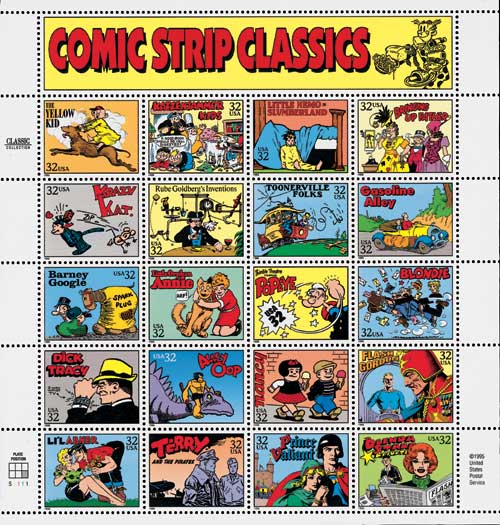
Also issued in 1995, the Comic Strip Classics sheet honored comics that were created within the first 50 years of comics, from 1895 to 1945. One of these stamps included a rare USPS spelling mistake. In the text on the backside of the Little Orphan Annie stamp, “indispensable” is misspelled “indispensible.”
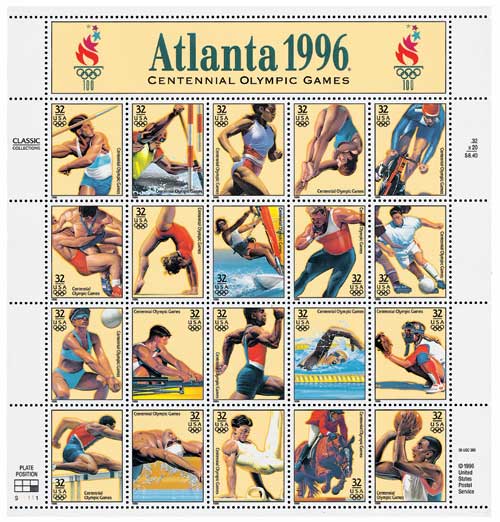
Next up in the series came the 1996 Olympics sheet. The 1996 Olympic Summer Games marked the 100th anniversary of the modern Olympics. More than 11,000 athletes from 197 countries reached for excellence as they took the Olympic motto, “Swifter, Higher, Stronger,” to heart.
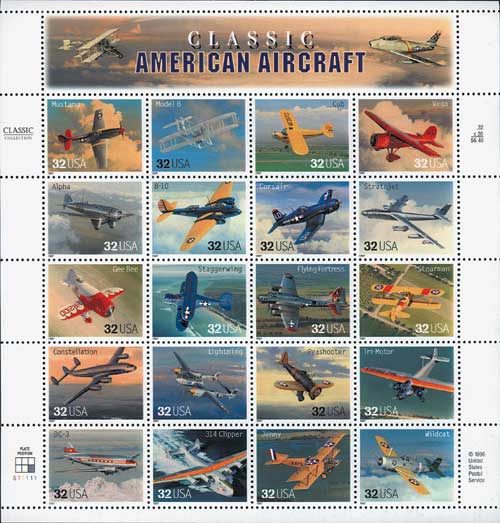
The fifth issue in the series featured Classic American Aircraft. According to the back of the pane, “The aircraft chosen for this Classic Collection are representative of the first fifty years of powered flight in America. They are a chronicle of our aviation history from the days of wood-framed, fabric-covered contraptions to high-flying supersonic vehicles.”
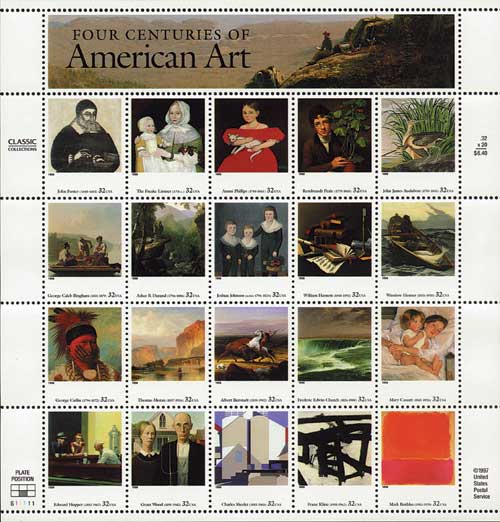
In 1998, the sixth addition to the series honored four centuries of American Art. The text on the back of the pane reads, “The American artists represented here were born in diverse places around this country, as well as elsewhere. Some were self-taught, others were academically trained… These images … reflect some of the enduring themes in American visual arts: a concern with individuality in a democratic society, reverence for the variety of landscape across the continent, down-to-earth realism, and a recurring sense of optimism and energy.”
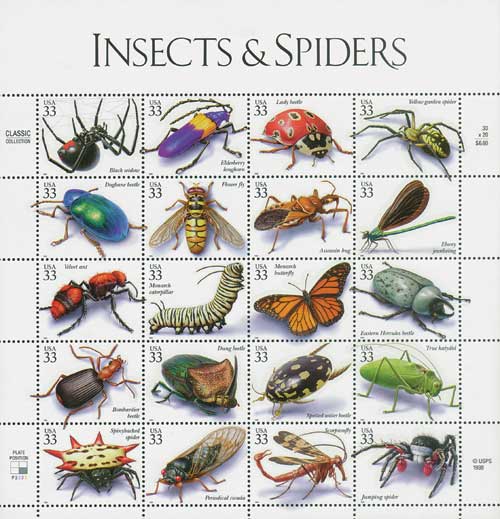
While the 1999 addition to the series may seem like a departure from the Americana themes of previous issues, the USPS had their reasons for this sheet. Picturing 16 insects and four spiders, the sheet was created to display their educational value and create interest among children. The species represent the wide range of colors, lifestyles, and behaviors exhibited by these amazing creatures.
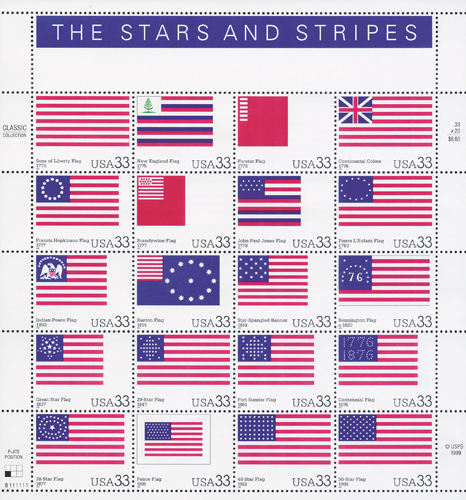
The first 2000 addition to the series might be the most patriotic yet! It shows the evolution of the American flag from Colonial times to the present. According to the back of the sheet, “The United States flag has evolved over the past 200-plus years from a variety of local, regional, and national designs, including unofficial and semi-official ones… These 20 examples, which are based on the most recent research available, offer a visual sampling of variations on a theme.”
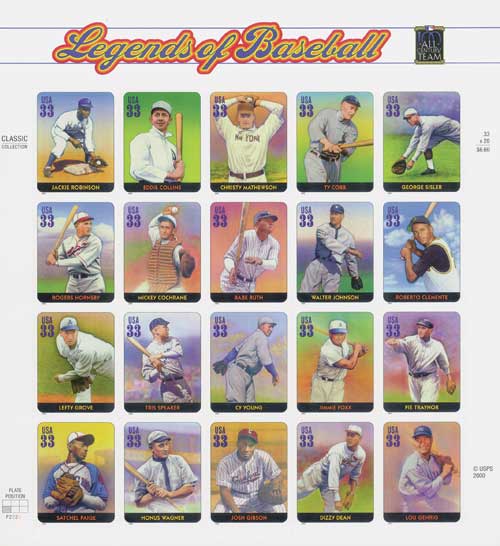
The second sheet of 2000 honored America’s favorite pastime. The Legends of Baseball issue honored 20 baseball greats who were named to the “All-Century Team,” announced after the 1999 season. Votes from fans, as well as members of a special panel, selected the team.
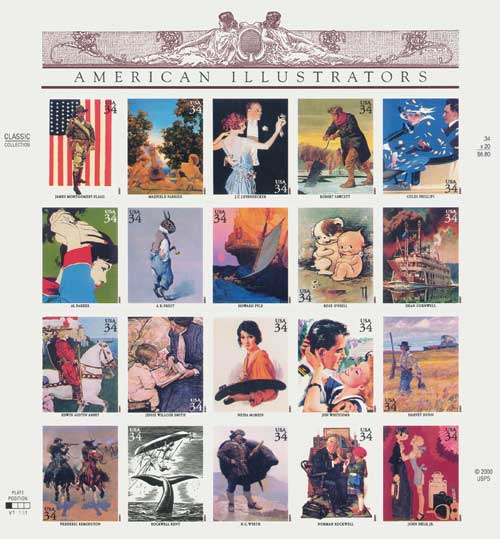
In 2001, the Classic Collection honored the art of 20 American illustrators of magazines, posters, books, and advertisements. According to the USPS, “Advances in printing and publishing made possible by the Industrial Revolution ushered in a new era for American illustrators during the last quarter of the 19thcentury, allowing their work to be reproduced with increasing fidelity and attracting some of the country’s finest talents to the field.”
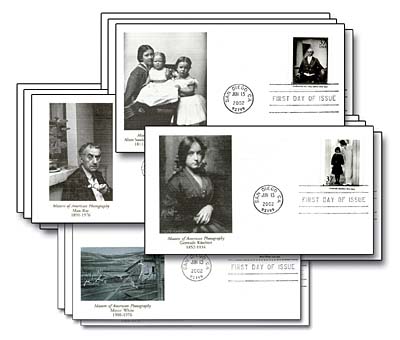
On June 13, 2002, the USPS issued the final sheet in the Classic Collection Series, honoring 20 renowned American photographers. The sheet adopted a different format, similar to the Legends of Hollywood sheets. The works on the sheet are displayed in chronological order and the selvage shows a photo taken by William Henry Jackson or one of his assistants. These artists combined daring, craftsmanship, and creativity to enlarge our view of America and the American people.
34¢ American Illustrators
City: New York, NY
Perforations: Serpentine die cut 11.25
Color: Multicolored
Final Issue Of The Classic Collection
The series began six years earlier with the infamous Legends of the West sheet in 1994. That sheet and the series that followed it actually developed out of plans to honor the centennial of Ellis Island!
After the Citizens Stamp Advisory Committee requested artwork for the potential Ellis Island stamp, they found the art was “grim and lacked color.” As they continued to discuss the project, their focus shifted from immigration to America’s Westward migration in the 19thcentury. And that, in turn, became a Western Americana project. They initially considered a four-stamp set but had ideas to honor several figures and ultimately decided on 20 stamps. Then the USPS manager of philately and the head of stamp design came up with the idea for the Classic Collection series, of which the Legends of the West would be the first issue.

Each sheet in the series would have the same unique 20-stamp format. Each would have broadly-defined Americana themes, exceptional artwork, a banner printed on the selvage of the sheet, and descriptive text on the back of each stamp. Additionally, postal cards with matching artwork would be issued to coordinate with a few of the sheets.

The series got off to a memorable start when it was discovered before the Legends of the West stamps were even issued that the stamp picturing Bill Pickett actually pictured his brother Ben. The sheets were recalled, but 186 were sold before the First Day of Issue, so the USPS sold 150,000 sheets through a mail-order lottery. The corrected sheet was issued on October 18, 1994.

The Classic Collection series continued in 1995 with two more sheets. The first was the Civil War sheet, which marked the 130thanniversary of the end of the war. The creation of this sheet brought about the most extensive effort in USPS history to review and verify the historical accuracy of each of its stamp subjects. Each of the 16 individuals and four battles featured were chosen from a master list of 50 subjects. The goal of the USPS was to show the wide variety of people who participated in the Civil War.

Also issued in 1995, the Comic Strip Classics sheet honored comics that were created within the first 50 years of comics, from 1895 to 1945. One of these stamps included a rare USPS spelling mistake. In the text on the backside of the Little Orphan Annie stamp, “indispensable” is misspelled “indispensible.”

Next up in the series came the 1996 Olympics sheet. The 1996 Olympic Summer Games marked the 100th anniversary of the modern Olympics. More than 11,000 athletes from 197 countries reached for excellence as they took the Olympic motto, “Swifter, Higher, Stronger,” to heart.

The fifth issue in the series featured Classic American Aircraft. According to the back of the pane, “The aircraft chosen for this Classic Collection are representative of the first fifty years of powered flight in America. They are a chronicle of our aviation history from the days of wood-framed, fabric-covered contraptions to high-flying supersonic vehicles.”

In 1998, the sixth addition to the series honored four centuries of American Art. The text on the back of the pane reads, “The American artists represented here were born in diverse places around this country, as well as elsewhere. Some were self-taught, others were academically trained… These images … reflect some of the enduring themes in American visual arts: a concern with individuality in a democratic society, reverence for the variety of landscape across the continent, down-to-earth realism, and a recurring sense of optimism and energy.”

While the 1999 addition to the series may seem like a departure from the Americana themes of previous issues, the USPS had their reasons for this sheet. Picturing 16 insects and four spiders, the sheet was created to display their educational value and create interest among children. The species represent the wide range of colors, lifestyles, and behaviors exhibited by these amazing creatures.

The first 2000 addition to the series might be the most patriotic yet! It shows the evolution of the American flag from Colonial times to the present. According to the back of the sheet, “The United States flag has evolved over the past 200-plus years from a variety of local, regional, and national designs, including unofficial and semi-official ones… These 20 examples, which are based on the most recent research available, offer a visual sampling of variations on a theme.”

The second sheet of 2000 honored America’s favorite pastime. The Legends of Baseball issue honored 20 baseball greats who were named to the “All-Century Team,” announced after the 1999 season. Votes from fans, as well as members of a special panel, selected the team.

In 2001, the Classic Collection honored the art of 20 American illustrators of magazines, posters, books, and advertisements. According to the USPS, “Advances in printing and publishing made possible by the Industrial Revolution ushered in a new era for American illustrators during the last quarter of the 19thcentury, allowing their work to be reproduced with increasing fidelity and attracting some of the country’s finest talents to the field.”

On June 13, 2002, the USPS issued the final sheet in the Classic Collection Series, honoring 20 renowned American photographers. The sheet adopted a different format, similar to the Legends of Hollywood sheets. The works on the sheet are displayed in chronological order and the selvage shows a photo taken by William Henry Jackson or one of his assistants. These artists combined daring, craftsmanship, and creativity to enlarge our view of America and the American people.




